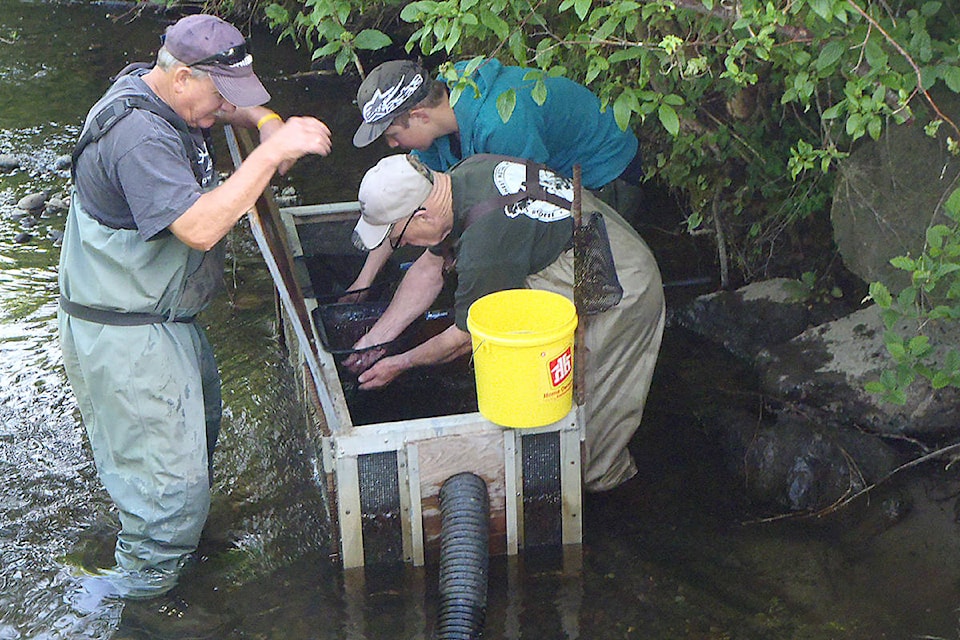A pollutant washed into Simms Creek last month and wiped out a number of coho.
At the Simms Creek fish fence in Willow Point, a rainy forecast is usually a cause for optimism in the volunteers who ID, weigh, and measure fish that pass through the fence.
Rain often indicates a busy day ahead, as numbers of Coho migrating out to sea generally spike during periods of rainfall.
May 14 was no exception, as 170 Coho smolts and 82 cutthroat trout were counted. Unfortunately, as the day went on, a bad smell began to fill the air at the creek. By the evening, the smell had cleared, but the next day, there were 74 dead coho in the trap.
The Department of Fisheries and Oceans collected samples of the fish to be sent for testing. While it is difficult to pinpoint the exact cause of events like this, it is most likely linked to pollutants being washed down the creek. The hope is to identify toxins present in the fish’s bodies.
Events like this indicate a need to be more careful about what is put into urban waterways, Josie Simpson of the Greenways Land Trust says in a press release. Pollution is not limited to people dumping toxins directly into a stream, although that kind of thing does happen. More often, pollutants are washed off of surfaces like roads, where they accumulate during dry periods, and contaminate the stormwater that feeds into the creek.
“You might not live directly next to the creek, but if you spill something on your driveway – chemicals, soap, oil, fertilizers – and it gets washed into the storm drains, it will end up there,” says Simpson. “And on a creek the size of Simms, it can have a huge impact on the ecosystem.”
It’s a potent reminder that what we do in our yards and on our streets has an effect on our green spaces, despite how distant they can sometimes appear.
Homeowners can read more about their responsibilities to manage pollutants in the City of Campbell River’s Environmental Protection Bylaw, under Part 3: “Watercourses and the Storm Drainage System.”
Anyone interested in volunteering on their local creeks monitoring fish populations, doing habitat restoration, and keeping an eye out for pollution events is encouraged to reach out to the Greenways Land Trust by emailing info@greenwaystrust.ca, or calling at 250-287-3785.
RELATED: Campbell River organization launches fruit tree pilot project
RELATED: Campbell River students learn about cycle of life during coho fry release
